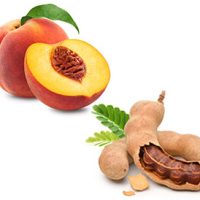The Natural & Organics Show (NOPEX) will be taking centre stage once more at…

What Can You Expect in 2018 When it Comes to the Food Industry
The food industry is constantly evolving, reflecting consumers’ tastes and preferences, and 2018 will be no exception. Certain trends are already emerging whilst others have been around for some time, so it may be easy to know what to expect in the coming year.
Growth of the Kosher Industry
The kosher food market is set to grow by 11.6% by 2025. While it is now worth $24 billion (or approximately £18 billion), this figure is expected to rise to $60 billion (or around £44.4 billion) at a global level. The pareve segment alone is estimated to be valued at over $35 billion (around £26 billion).
Rise of Food Certifications
In the global food certification market, developed countries are in the lead, accounting for more than 95% of sales. North America by itself is estimated to see the highest compound annual growth rate of 6.2% from 2018 to 2023. Other countries are also increasing their certification sales’ figures, like Brazil, Argentina and China.
When it comes to the kosher market, kosher certifications already are growing around the world, so we can expect to see these numbers further increase in 2018.
Less Sugar
Another trend that shows no sign of abating is the intent to reduce the levels of sugar in food and drinks. While other elements, such as trans fat (trans fatty acid) and or salt, are also in the spotlight, sugar appears to be the ingredient that is driving reformulation efforts.
France introduced a sugar tax back in 2013, Portugal did it in 2017 and both the UK and Ireland will introduce it this year. USA has had a soda tax in various states for number of years. This product reformulation that is taking place will likely continue to see a growth, as foods and drinks still need to maintain quality – taste must not be compromised when attempting to reduce sugar content. (For a more complete review of global sugar taxes click here).
This will probably lead to new and innovative solutions for the food and drink industry.
More Meatless Foods
From 2014 to 2017, the USA saw a rise of 600% in people who identified as being vegan, and 44% of German consumers now follow a low meat diet. In 2016, in the UK, there were already three and a half times as many vegans in the country as there were in 2006, which included an increase of 360% in the number of vegans over the age of 15.
The rise of vegetarianism and veganism in the last few years is clear, and this is a trend that appears to be gaining strength. After all, people are becoming more and more aware of the ethical, environmental and health impacts of a diet heavy in meat.
The Growing Grocery Convenience Market
According to GlobalData, a leading data and analytics company, the UK food and grocery convenience market will grow by 4.1% in 2018 and 22% by 2022. This is likely because of food-to-go products that enable consumers to benefit from easy, ready-to-eat packaged food whilst on the move and out of the home
This survey found that most convenience store purchases (75%) were for staples such as bread and milk. In addition, Tesco had the largest market share (19.8%) in 2017, with many consumers having purchased items at a Tesco Express / Metro store. Part of this trend is driven by Millennials who much prefer shopping in these stores. Over the coming years it will be the multiples and label stores that will gain at the expenses of independents.
Contact KLBD Kosher to learn more about getting your kosher certification and benefit from the advantages such a certification can offer in the increasing global demand for kosher food and drinks.




